"The principal award of $500 in the 16 millimeter division was awarded to B. V. Covert...for his remarkable study of a quail hunt and a number of beautiful pointers in action. Mr. Covert's photography was superb in this film and in two other contest contributions submitted for the consideration of the judges...His films revealed, besides brilliant photography, an unusual scenic sense. His films were no mere series of disjointed shots. In each case, Mr. Covert told a story—and an interesting one" Photoplay, June 1928, 67.
"In describing her film, Miss Bodine says: "I did all the camera work myself, using a Filmo double speed Camera, although some of the picture was taken using single speed. Most of the picture was made with a Taylor-Hobson Cooke lens, a 3 3-4 telephoto, the film being the regular Kodak safety stock. All of the work was done on a tiny porch of a summer cottage in Maine" Miss Bodine used small bottles, filled with sweetened water, to attract the humming birds before her camera." Photoplay, June 1928, 137.
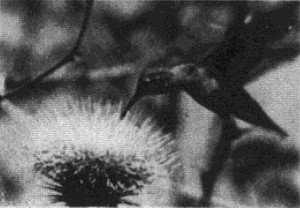
"Wildflowers and desert life of some of the birds and small animals have called many but few have captured the beauty with such ease and grace. There is an intimacy with all the creatures as we watch them feed and play and the birds nest in the cactus, feeding and training the young. Those who live with and appreciate the desert will be delighted with this gem of a nature film" PSA Journal, Nov. 1960, 39.
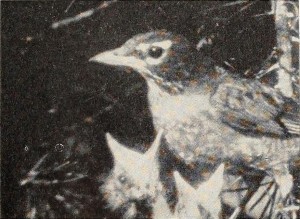
"Trim, tightly knit and altogether engaging, Backyard Birding presents, with affectionate attention to detail, a nature-loving father and his small son searching out the common and uncommon birds of their New England neighborhood. The film's pleasant music and informed but unassuming narrative are in sympathetic harmony with the pictorial whole. In it, with apparent purpose, Herbert D. Shumway has employed a cloudy-bright lighting throughout. Thus, the countless closeups of his bird neighbors, as they build their nests and rear their young, are in soft, true and unshadowed color — as so befits the film's gentle theme. And, just in case you're wondering, these superb scenes (on 8mm. film, remember) are beautifully sharp, despite the wider lens apertures which must have been used." Movie Makers, Dec. 1952, 324, 337.
"Bird colonies of Langara and Cox Islands in the Queen Charlotte Islands." (BC Archives)
"Documentary on the nesting and feeding habits of birds found in Norfolk and Lincolnshire and filmed from a hide over a two-month period. Birds seen are: common plover, redshank, whooper swan, mute swan, bittern, ringed plover, oyster catcher, black-head gull, bearded tit, sedge warbler, reed bunting, red hawk, snipe and Montagu's harrier." (EAFA Database)
"In Birds of a Feather, Edmund Zacher, II, ACL, exhibits the patience and skill necessary to compile a complete story entirely with telephoto lenses. All the particular points which must needs be observed to make successful telephoto pictures — careful centering, sharp focusing and rigid camera support — are exhibited in this film, which is interesting withal, as it tells the story of a thrush family from the time the youngsters are hatched until the last laggard leaves the nest. Some scenes, which show the parent bird in closeup by means of telephoto magnification and in which the bird fills the entire frame, are truly remarkable. Good fortune gave Mr. Zacher the beautiful background of a flowering tree for this springtime idyll. A suitable musical background — compiled from discs — accompanies the film. Mr. Zacher made this picture entirely from a window in his home, and his patience and skill in capturing every needed shot are remarkable." Movie Makers, Dec. 1934, 534.
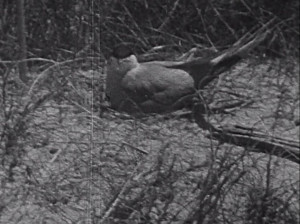
"The film concentrates on the birds, particularly the common tern, the little tern and the oyster catcher" (EAFA Database).
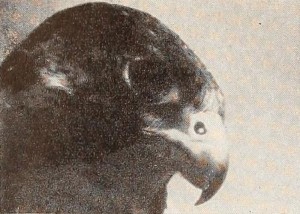
"You wouldn't think that just one movie maker could shoot all this footage (2400) on birds — no matter how interested and informed he was on the subject. And if that was the way you felt, you would be dead right. For Birds of Washington is the joint work of two men, J. Don Sutherland and Ralph E. Lawrence, who, because they customarily screen their films together, chose to submit them as one contest entry. Both, in any case, are highly competent movie makers and soundly informed students of bird life. For example, they preface briefly each new subject grouping with a pictorial survey of the type of terrain in which the birds will be found. Makes the film that much more informative. Outstanding, in our recollections, are their sequences on the American bald eagle and on an owl — whose family tree we regret we cannot recall." Movie Makers, Dec. 1952, 340.
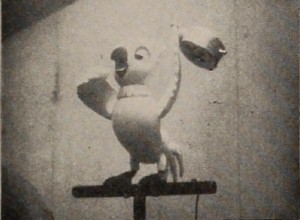
"Animated figures have seldom been presented with such meticulous technique and in such clever situations as are executed by Clifford Bach in Breakfast in Bed. A perfectionist to the last twitch of an eyebrow, Mr. Bach has achieved exceptional realism in the movements of his small figures by painstaking frame by frame exposure and expressive camera viewpoints. His story follows the efforts of a cocky little cockatoo, Windy, to prepare breakfast for his master, Professor Whiffle. Windy's ingenuity overcomes all obstacles in a series of neatly motivated and genuinely amusing "gags." Mr. Bach's persistence and eye for design indicate a bright future in the field of animated movies." Movie Makers, Dec. 1947, 536.
Total Pages: 6